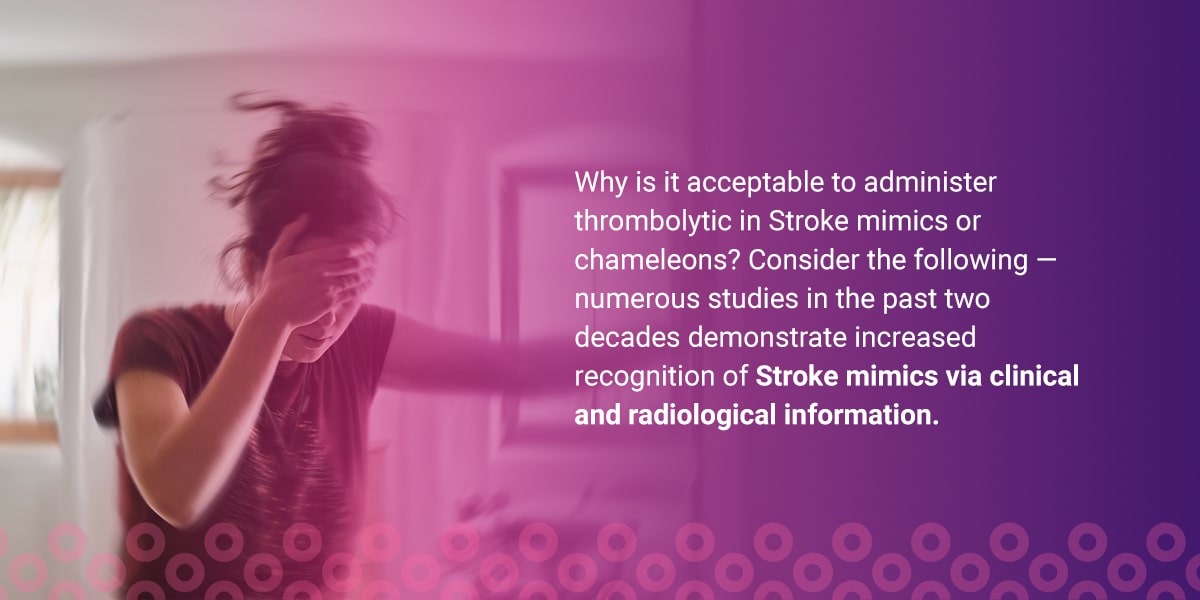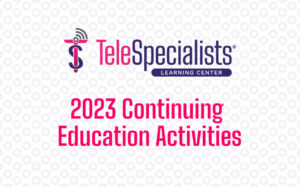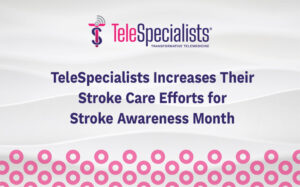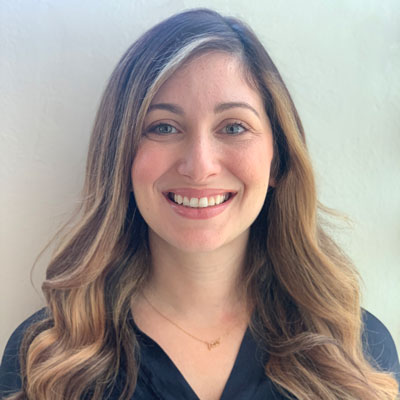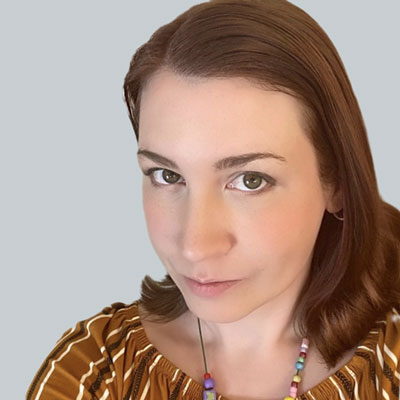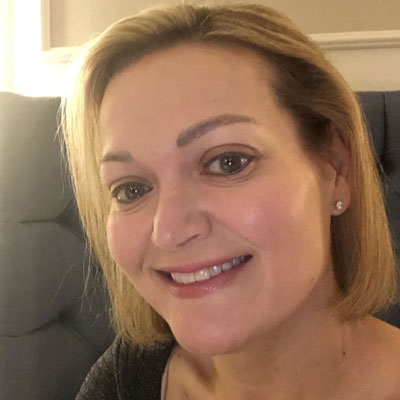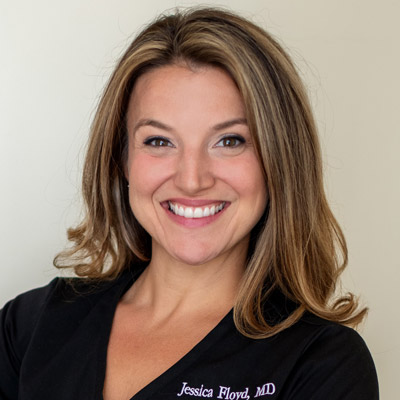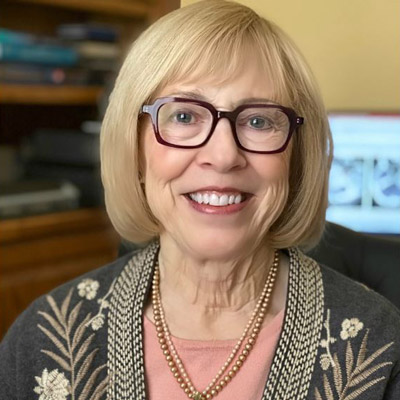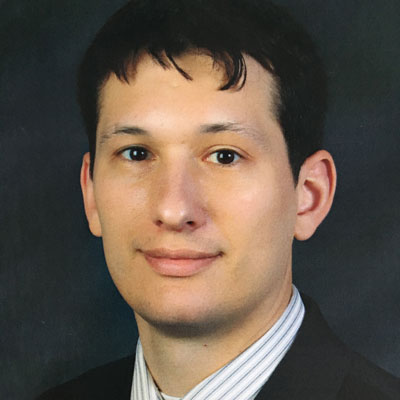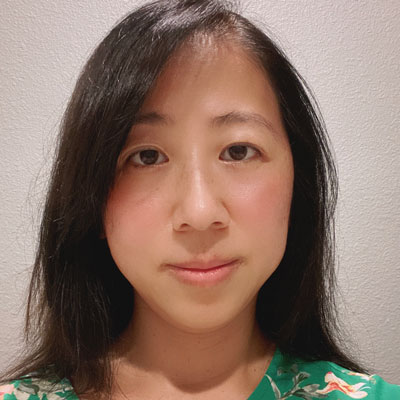Atypical Causes of Stroke: Mimics & Chameleons
Atypical Causes of Stroke
Strokes affect more than 795,000 people in the United States every year. This alarming amount makes access to efficient stroke diagnosis and treatment critical. Strokes have various atypical causes, often making diagnosing symptoms on admission challenging. Immediate treatment is one of the best solutions to lessen permanent damage and save lives.
When treating a potential stroke patient, every minute counts — they must receive quality medical services and treatment.
Causes and Symptoms of Typical Strokes
Neurology is an essential yet diagnostically challenging field of medicine due to the limited availability of sensitive diagnostic testing and scarcity of expert neurologists, especially at rural “spoke” hospitals nationwide. The most prevalent and permanently disabling neurological condition is a stroke.
Strokes occur abruptly and result in permanent damage to millions of brain cells every minute once blood flow to part of the brain is interrupted due to a blood vessel blockage (Ischemic Stroke) or blood vessel bleeding (Hemorrhagic Stroke). If an Ischemic Stroke is suspected, thrombolytics (blood clot busters) may be necessary.
A typical Ischemic Stroke happens when blood flow is constricted to part of the brain. A build-up of fat on the lining of the blood vessels is often the cause of blood constriction. Fat lines blood vessel walls (atherosclerosis) can constrict blood flow in two ways — Cerebral Thromboses and Cerebral Embolism:
- Cerebral Thromboses: A blood clot develops fat in the blood vessels constricting blood flow to the brain.
- Cerebral Embolism: A blood clot that develops in the heart or major arteries (carotid arteries) in the upper abdomen. The clot travels through the bloodstream to the brain and clogs vessels, causing a Hemorrhagic Stroke or brain bleeding.
As a neurologist working heavily in the stroke/TeleStroke field, we must address that when stroke symptoms occur, they are not always as they seem. Stroke neurologists integrated as part of a greater emergency care team expedites recognition and decision making for all patients with sudden stroke-like symptoms.
Taken together, these stroke-like symptoms may be characterized as one of three conditions — a typical stroke, a non-stroke condition mimicking stroke, or an atypical stroke mimicking a non-stroke condition. Our focus will be on the latter two presentations respectively known as stroke mimics and chameleons.
Misdiagnosis of mimics and chameleons impact emergency treatment decisions daily. Surprisingly, many medical providers and patients alike are unaware of mimics and chameleons, and how they can impact the care of all stroke patients.
An Ischemic Stroke is a severe health emergency and a leading cause of death in the United States. With immediate medical attention, physicians can lessen physical damage and prevent death. With “typical” Ischemic Strokes, a patient experiences the sudden onset of symptoms such as:
- Numbness or weakness in the arms, legs, and face
- Facial drooping
- Arm weakness or drift
- Confusion and trouble speaking and understanding speech
- Vision issues like trouble seeing from both eyes
- Difficulty walking and dizziness
Less typical symptoms can include unexplained headaches, nausea, unsteadiness, vomiting, and fainting.
But what happens when stroke symptoms are present, but there’s no stroke? Conversely, and more dangerously, how do we identify a stroke with atypical symptoms?
When typical stroke symptoms present as a stroke, but there is no actual stroke, it is called a Stroke Mimic. A Mimic is a non-stroke condition presenting with stroke-like symptoms. Typically, Mimics lead to an over-diagnosis and occasional over-treatment of strokes, rather than identifying and treating the true cause of the symptoms.
Alternatively, there are Stroke Chameleons. These are actual stroke conditions presenting with atypical or under-recognized stroke symptoms masquerading as non-stroke medical conditions. Misdiagnosing Chameleons lead to significant delays in identifying and treating patients with actual strokes.
One major differentiator to understand is that with Ischemic Strokes, symptoms are often negative or absent (i.e. the loss of strength, sensation, vision or speech). With Mimics and Chameleons, patients experience positive or new symptoms (visual hallucinations, abnormal movements, spreading pain) with or without the negative symptoms of a stroke.
Atypical Causes of Stroke — Mimics and Chameleons
Atypical causes of strokes, such as stroke mimics and chameleons, can lead to long-term health damage.
A mimic can seem like a typical stroke and is often a situation that requires diagnosis when someone is admitted to the hospital. Seizures and migraines are sometimes types of mimics and may be diagnosed as stroke after brain scans.
A Stroke chameleon is a stroke that presents symptoms unusual to an Ischemic Stroke. It can disguise as symptoms like vertigo, confusion, unsteadiness, and reduced consciousness levels.
While Stroke mimics and chameleons can take longer to diagnose, treating them as typical strokes is a necessary precaution.
The Mimic
Physicians can diagnose mimics with an MRI scan and rule out a possible stroke. In emergencies, treating a Stroke mimic on admission is a necessary and normal precaution before diagnosis. Stroke mimics can manifest differently depending on age. They can present as epilepsy, hemiplegic migraines, high blood pressure, and seizures. In some patients, mimics can occur as mass lesions in the brain and Metabolic Encephalopathy. Loss of motor control, cognitive problems and bowel and bladder issues sometimes accompany mimics.
Some additional ways Mimics can present include:
-
-
- Recrudescence of prior stroke
- Seizure/Post-Ictal Todd Paralysis
- Complicated migraine
- Functional neurological or conversion disorders
- Subarachnoid Hemorrhage/ICH
- Hypoglycemia/Hyperglycemia/Severe Hyponatremia/Metabolic Encephalopathy
- Hypertensive Encephalopathy/PRES
- Peripheral Vertigo: BPPV, Labyrinthitis, Vestibular Neuronitis
- Bell’s Palsy
- Other: Guillain Barre, Myasthenia Gravis, MS, Brain Tumor/Abscess, Encephalitis, Sepsis, Syncope
-
For example, recognizing symptoms such as stuttering speech, variable examination findings, and astasia-abasia gait clue neurologists into diagnosing a stroke mimic, such as conversion disorder, since these are not caused by true strokes.
Identifying Stroke Mimics
The most sensitive and specific test is an MRI of the brain. If a brain MRI is performed while a patient is experiencing stroke-like symptoms but does not show any injury or bleeding, it is extremely likely to be a mimic, especially if a mimic was already suspected. However, the limitation of diagnosing by negative imaging is that MRI can be falsely negative in cases of small or early Ischemic Strokes. Thus, advanced imaging alone cannot identify a Stroke mimic.
Clinical factors, including demographics (younger age, women, minorities), have been observed more often in mimics than true Ischemic Strokes. Ischemic Strokes can happen at ANY age but tend to be less prevalent under the age of 50, especially if there are no obvious risk factors. Finally, consider patients with a psychiatric disorder, pre-existing neurological illness, or even a new life event/stressor (moving, new job, death of a loved one).
Identifying mimics is challenging since stroke treatment is extremely time sensitive. The decision to administer thrombolytics (blood-clot busters) needs to be made clinically, well before time-consuming diagnostic testing or additional histories can be obtained. The take-home point is that if an Ischemic Stroke cannot be ruled out (even if a mimic is suspected), a patient must be treated as if he or she is experiencing an Ischemic Stroke.
The Chameleon:
Stroke chameleons are true Ischemic Strokes with atypical, vague, or subtle stroke-like signs and symptoms. Symptoms such as malaise, loss of consciousness, unsteady gait, generalized weakness, altered mental status, psychosis, and vomiting are all chameleon symptoms that could easily be attributed to another medical condition.
What non-stroke medical conditions are atypical stroke symptoms most often attributed to?
-
-
- Altered mental status/toxic metabolic encephalopathy
- Syncope Hypertensive emergency
- Systemic infection/sepsis
- Acute coronary syndrome/NSTEMI
- Vascular disorders, Moyamoya Disease, Fibromuscular Dysplasia, Fabry diseases
- Hematological disorders, Sickle Cell Diseases
- Inflammatory blood vessel disorders, Vasculitis, Suasac’s Syndrome
- Migraines
- Other: Vertigo, Dementia, Focal Motor Seizure, Cauda Equina Syndrome
-
Diagnosing the Real Strokes
The most efficient way to confirm a stroke is through imaging, though each type serves a different purpose with different limitations:
-
-
- Non-Contrast Head CT: Rules out acute bleeding and already present stroke (>6-12 hours). Not as reliable in ruling out early stroke/back of the brain stroke. Since CT rapidly rules out bleeding in the brain, this is the only imaging test needed to determine if a patient can safely receive alteplase.
- CT Angiogram: confirms Large Vessel Occlusions (major blood vessel clots) accounting for 25-50% of Ischemic Strokes. Necessary to determine if mechanical thrombectomy (blood clot retrieval) is needed.
- CT Perfusion: Determines the amount of salvageable brain (penumbra) from the irreversibly damaged brain (infarct core) in patients with Large Vessel Occlusions. This helps determine good candidates for mechanical thrombectomy to remove blood clots before more irreversible damage occurs
- MRI Brain: Identifies diffusion restriction (areas of brain cell death), which occurs in Ischemic Strokes. Diffusion restriction can be seen in some Stroke mimics such as infections, tumors, and after seizures/status epilepticus, but are typically easy to distinguish from true strokes.
-
Stroke Mimics and Chameleons — Is Treatment Appropriate?
When in doubt, if an Ischemic Stroke cannot be expeditiously ruled out, even though a Stroke mimic or potential chameleon is suspected, it is recommended to administer Thrombolytic if there are no contraindications.
Why is it acceptable to administer alteplase in Stroke mimics or chameleons? Consider the following — numerous studies in the past two decades demonstrate increased recognition of Stroke mimics via clinical and radiological information.
The number of mimics identified is rising with more TeleStroke consultation requests from emergency departments. In hindsight, anywhere from 15-30%+ patients admitted for stroke may be diagnosed with a Stroke mimic or non-stroke diagnosis at discharge.
Recently, two studies have demonstrated increased recognition of mimics by stroke providers, and the implications of treating mimics with alteplase. A retrospective study in 2018 to externally validate the TeleStroke Mimic Score identified common characteristics of mimics, including younger age, fewer cardiovascular risk factors, lack of facial droop, and NIHSS score <14.
Analysis of Get With The Guidelines Stroke Registry data (72,582 patients across 485 US hospitals) showed that despite the rising consultations for Stroke mimics, only 3.5% of patients who received alteplase were designated as mimics at centers that use alteplase more often.
Even if a Stroke mimic is suspected, stroke alerts should be activated as soon as possible. Early stroke consultations allow neurologists to determine whether an Ischemic Stroke could explain sudden stroke-like symptoms. Unless the patient has an easy to exclude mimic (i.e., hemorrhage on CT or hypoglycemia with low blood glucose), a neurologist will offer Thrombolytics in an eligible patient as soon as possible.
Time is brain. Thrombolytics significantly reduces long-term disability if administered as soon as possible. If alteplase is administered early, there is a net benefit of treatment within the first 4.5 hours, already taking into account the low but potential risk of harm (2-7% risk of brain bleeding). Although alteplase does not directly benefit a treated mimic, outcomes for mimics are better than true Ischemic Strokes, and the risk of harm is significantly less (<1%).
It is important to note that within the first 90 minutes of stroke symptom onset, less than four patients must be treated with alteplase for one true stroke patient to avoid life-altering disability. Extended up to 4.5 hours, the number of patients needed to treat for net benefit is less than eight. Therefore, even if 3.5% of the four patients receiving alteplase is a mimic, at least one true Ischemic Stroke patient will benefit by avoiding major disability.
Delaying alteplase treatment to identify and exclude mimics up front by waiting for additional imaging results (CTP, MRI) or overemphasizing the harms of alteplase is impractical and harmful for the 25% of stroke patients that could have benefitted by receiving treatment sooner. The repercussions of missed or untreated stroke (either excluding an Ischemic Stroke patient due to the suspicion of a Stroke mimic, or misdiagnosing chameleons as another non-stroke condition) are significant from both a patient care and medicolegal standpoint. For example, 20% of misdiagnosed strokes in the ED are chameleons.
Regardless of whether stroke-like symptoms are due to an Ischemic Stroke, Stroke mimic, or Stroke chameleon, the sooner a stroke alert is activated and alteplase is administered, the greater the net benefit to stroke patients compared to delayed treatment or no treatment at all.
How can you ensure that patients receive the best and most efficient care possible?
- When in doubt, activate a Stroke Alert. Consult with neurology early; it’s better to over-call as each case is a learning point. A second set of experienced eyes makes a difference.
- Always seek the last known normal. How suddenly did these symptoms present?
- Educate your team (including EMS) on tools to identify stroke symptoms with a comprehensive symptom exam like SAVES or BEFAST
- Understand the limitation of NIHSS. NIHSS was designed as a research tool to reliably screen patients for stroke and predict stroke volume. However, it favors the identification of left anterior hemispheric strokes and is not as sensitive for right hemispheric or posterior circulation strokes
- HINTS (Head Impulse, Nystagmus, Test of Skew) for vertigo
- INFARCT (Impulse Normal, Fast-phase Alternating, Refixation on Cover Test) suggests Ischemic Stroke
- Partner with a reputable comprehensive TeleNeurology company with substantial clinical and telemedicine stroke experience. This will ensure that your patients will get the best stroke or emergent neurology care quickly and efficiently.
Telemedicine for Efficient Stroke Treatment
With the inclusion of telemedicine, more specifically TeleStroke services, into more hospitals and EDs, expert neurologists can help recognize a suspected mimic or chameleon and treat it appropriately. Unlike most medical conditions that require a definitive diagnosis before deciding on treatment, the moderate to high clinical suspicion of Ischemic Stroke alone is necessary to decide if alteplase should be offered. Once alteplase is administered, additional investigations will either confirm an Ischemic Stroke, rule out a mimic, or confirm whether the patient was a chameleon after all.
TeleSpecialists: Quality TeleStroke Services
At TeleSpecialists, we provide quality and efficient stroke telemedicine. Our service enables stroke-trained neurologists to examine potential stroke patients on video at their bedside. We aim to provide emergency stroke guidance and recommendations as quickly as possible to minimize permanent damage and save lives.
Contact us today!
Have questions on how TeleSpecialists works with hospitals to create a strong TeleStroke program?
References: [i] Ali SF, Hubert GJ, Switzer JA, Majersik JJ, Backhaus R, Shepard LW, Vedala K, Schwamm LH. Validating the TeleStroke Mimic Score: A Prediction Rule for Identifying Stroke Mimics Evaluated Over Telestroke Networks. Stroke. 2018 Mar;49(3):688-692. doi: 10.1161/STROKEAHA.117.018758. Epub 2018 Jan 26. PMID: 29374105; PMCID: PMC5829006. [ii] Ali-Ahmed F, Federspiel JJ, Liang L, Xu H, Sevilis T, Hernandez AF, Kosinski AS, Prvu Bettger J, Smith EE, Bhatt DL, Schwamm LH, Fonarow GC, Peterson ED, Xian Y. Intravenous Tissue Plasminogen Activator in Stroke Mimics. Circ Cardiovasc Qual Outcomes. 2019 Aug;12(8):e005609. doi: 10.1161/CIRCOUTCOMES.119.005609. Epub 2019 Aug 15. PMID: 31412730; PMCID: PMC6699639. [iii] Yaghi S, Willey JZ, Cucchiara B, Goldstein JN, Gonzales NR, Khatri P, Kim LJ, Mayer SA, Sheth KN, Schwamm LH; American Heart Association Stroke Council; Council on Cardiovascular and Stroke Nursing; Council on Clinical Cardiology; and Council on Quality of Care and Outcomes Research. Treatment and Outcome of Hemorrhagic Transformation After Intravenous Alteplase in Acute Ischemic Stroke: A Scientific Statement for Healthcare Professionals From the American Heart Association/American Stroke Association. Stroke. 2017 Dec;48(12):e343-e361. doi: 10.1161/STR.0000000000000152. Epub 2017 Nov 2. PMID: 29097489. [iv] Lansberg MG, Schrooten M, Bluhmki E, Thijs VN, Saver JL. Treatment time-specific number needed to treat estimates for tissue plasminogen activator therapy in acute stroke based on shifts over the entire range of the modified Rankin Scale. Stroke. 2009 Jun;40(6):2079-84. doi: 10.1161/STROKEAHA.108.540708. Epub 2009 Apr 16. PMID: 19372447; PMCID: PMC2881642.

